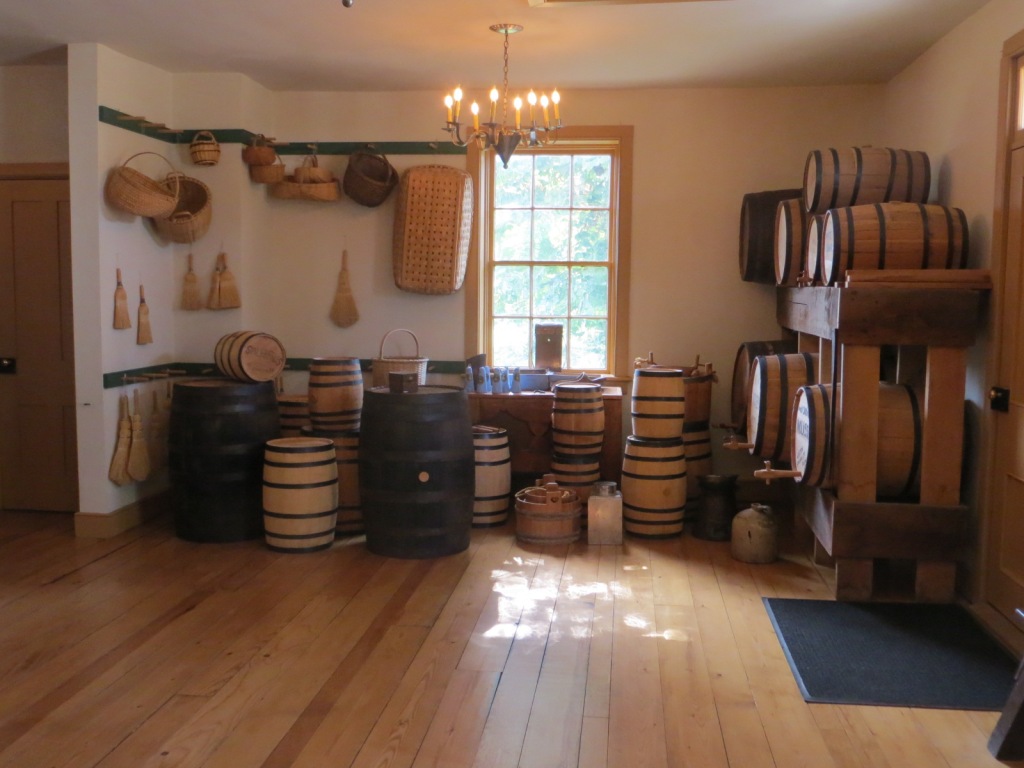Almost halfway through April, I just realized that I had not yet written my post about books I read in March. With March ending on Easter, followed by preparing for a trip to visit family and see the eclipse, I had completely forgotten about it. But here it is now.
I hadn’t thought it would be too difficult to find “a book with a neurodivergent main character,” but even so I was surprised to discover I had started two of them in one day (one was an audiobook, the other a hardcover). And I hadn’t been looking for that in either of them. I picked The Fire, the Water, and Maudie McGinn by Sally Pla because the title caught my eye and the premise – including the fact that Maudie is neurodivergent – appealed to me. I often find children’s book make great audiobooks for riding my exercise bike, because they always keep the story moving and make me want to hear what comes next. Books like this one do even more than that, because it explores themes that are often not easy to talk about without getting preachy, and for the most part it shows people as a realistic mix of positive and negative characteristics (it’s hard to think of anything positive about the stepfather). I think it would be great reading for anyone who has experienced being shamed for being the way they are, for whatever reason, as well as for people who want to be better at relating to those individuals who have experienced it. It doesn’t go into unnecessary details of the bad stuff that happens but doesn’t minimize them either, and throughout it has a strong message of hope.
The second one was a book I had already chosen for “a book with an enemies-to-lovers plot,” but Two Wrongs Make a Right by Chloe Liese also has a neurodivergent main character. I picked it in large part because of the connection to Much Ado about Nothing (which I have not read but had of course heard of), and I hoped it would be a relatively painless way to read a book for this prompt (since I don’t care for romance books in general). It’s a moderately interesting story, particularly because of the neurodivergent aspect, but I got tired of the non-stop sexual tension and eventual sex scenes.
I’m not sure just how well No Two Persons by Emma Bauermeister fits the prompt “a book about a writer,” since only the first of the ten characters in this book is a writer. But the whole book is about the novel written by this writer and how it plays a role in the other characters’ lives, so I decided it would count. Besides, I am very glad that the prompt led me to read this book, because it is one of my favorite books so far this year. I have read reviews that criticize it as being shallow, failing to fulfill its promise of exploring how books affect people in so many different ways. But I loved the writing and I loved getting to know each of these different people, and I’ll happily read something else by Emma Bauermeister.
I didn’t pick The Hidden Palace by Helene Wecker because it was “a book with at least three POVs” (since I didn’t know it had those different POVs when I started), but rather because it is a sequel to The Golem and the Jinni, which I enjoyed so much when I read it several years ago. As it happens I have read four other books already this year that have at least three POVs (including the book by Emma Bauermeister, which has ten), but the others all fit other prompts, and this one doesn’t, so it gets this prompt. It was interesting to see where the lives of the golem and the jinni had gone since the events of the first novel, but I didn’t enjoy it nearly as much. Perhaps that is because it was the initial exploration of what it meant to be a non-human in a human society that so intrigued me in the first novel. Perhaps it is because in the first novel the two of them seemed to be finding a way to adapt and cope with human society even if they would always remain separate from it, while in this novel things get much more complicated for them. The first one seemed much more characterized by hope, while this one seems to have much less of that quality.
A prompt like “a book from a genre you typically avoid” is not one I was happy to see in this year’s reading challenge, especially because other prompts already are requiring me to read romances and a horror novel, both genres I prefer to avoid. But then I discovered that our library has eleven volumes of the manga series Spy x Family by Tetsuya Endo. My husband and I have been watching the anime series made from the manga series, and while I’m not a fan of either manga or anime, this one interested me enough to watch it with him. I like seeing how the three people who make up this “family” (put together for purposes of a spy mission) interact with each other and with other people. Besides, since it’s in Japanese (with English subtitles), it’s nice to once in a while be able to recognize a Japanese word that we know (we’re learning Japanese using Duolingo).
For “a book that features dragons” I came across the audiobook A Natural History of Dragons by Marie Brennan. I didn’t know how well I’d like it but it sounded promising enough. It’s set in a world rather like ours but where the animal kingdom happens to include dragons. Lady Trent is a young woman fascinated by dragons, and despite prejudices against woman scholars (it takes place in what would be the Victorian era) and the difficulties of travel, she begins to make a place for herself as a student of natural history. As it turns out, I just love the way Lady Trent tells her story, and how she describes the development of scientific knowledge. I imagine if dragons were real, the development of scientific knowledge about them would probably happen much as she describes. This book is just the beginning of her life story – I’m not sure how many volumes there are in all but I’m already in the middle of the third.
I had no idea how to find “a book about a 24-year-old,” but in the discussion of this prompt on goodreads.com, someone suggested Hana Khan Carries On by Uzma Jalaluddin. It happens to also fit the prompt “a book with an enemies-to-lovers plot,” which meant it had some romance involved, but based on the way it was described I thought I would like it. And I did, for the most part. I kept getting annoyed with Hana for some foolish choices she makes, but I enjoyed reading her perspective on being Muslim in Canada, such as wanting a radio station where she is an intern to do a program about Muslims but not focus on the usual stereotypes. There is a lot of talk about food (her mother runs a restaurant, and the “enemy” is a young man opening another restaurant nearby that may put theirs out of business), and I thought it would be nice to have a bit more idea what the foods and flavors were, but probably I simply don’t have the right frame of reference for that.
I initially selected Ironweed by William Kennedy for the prompt “a book set 24 years before you were born,” but then realized it would work perfectly for “a book with a one-word title you had to look up in a dictionary,” which was the prompt I had thought I might have the most trouble with this year. (Ironweed is a wildflower with purple blooms.) It was moderately interesting and somewhat educational in giving insights into the lives of people living on the margins of society (or rather, those who were living that way in 1938 – I have no idea how it compares to today). But I can’t say I found it an enjoyable book to read, though I don’t know how much that is the writing style and how much the subject matter.
Since I had chosen to use Kennedy’s book for a different prompt, I ended up picking The Last Train to London by Meg Waite Clayton for the book set 24 years before I was born. It actually starts before 1938 and finishes later, but the bulk of the story takes place in 1938. This one, in contrast to Kennedy’s book, I enjoyed very much, despite the difficult subject matter at times – it is, after all, about getting children out of Hitler’s Germany, and while it doesn’t go into great detail on the cruelty of the Nazis, there is plenty enough. I particularly liked knowing that it was based on the true story of the work of Truus Wijsmuller in getting many Jewish children out of Germany to safety. Despite the horrors of the Nazi regime and the dangers involved in what she does, it is a story of hope.
One prompt I was particularly not looking forward to was “an autobiography by a woman in rock ‘n’ roll.” In the past couple of years I have read at least two books dealing with rock musicians, and didn’t care for either one. Those people didn’t seem to have much in the way of moral character, and anyway, why would I want to read about people who played music I didn’t care for? But when I saw someone mention A Natural Woman, I recognized the name Carole King from the song “Beautiful” that our community chorale is singing in a concert this month. I had been somewhat puzzled by the song and was curious to learn what was behind it. Once I read what King said about how she came to write the song it made a lot more sense. Beyond that, I enjoyed reading the story of her life, both personally and professionally.
I had read The Folly of Prayer: Practicing the Presence and Absence of God by Matt Woodley for a Bible study I led around eight or ten years ago. I generally try to read one or two books on prayer each year, and I decided that I wanted to reread this one. I think my reactions were similar to the first time I read it. It doesn’t tell how to pray, but is more about dealing with some of our feelings and habits related to prayer. While I might wish for a “this is how to pray” book, I’d probably find it no more helpful in the end. I think of Woodley’s book less as a way to get started praying and more as help in not quitting. It reminds us that it’s OK to tell God exactly how we feel, to expect an adventure rather than a smooth road, and – perhaps most important – he finishes by saying that the only way to learn to pray is by praying.
I picked up with rereading Jan Karon’s Mitford books with A Common Life. I don’t know what I thought of it the first time I read it, but this time it struck me as very odd, to go back in time to the wedding, which had taken place in one of the earlier volumes. It’s shorter than the other books, and makes me wonder if it is the result more of needing to meet the requirements of a book contract than having ideas for a new book. It’s not bad, just feels like a rehash of what I had read previously. But since I’m rereading the whole series, I can hardly expect anything new, even if I had forgotten a lot of details over the years. And it is light reading with nuggets of wisdom scattered throughout, what I was looking for in my bedtime reading.



 Posted by Pauline
Posted by Pauline 






